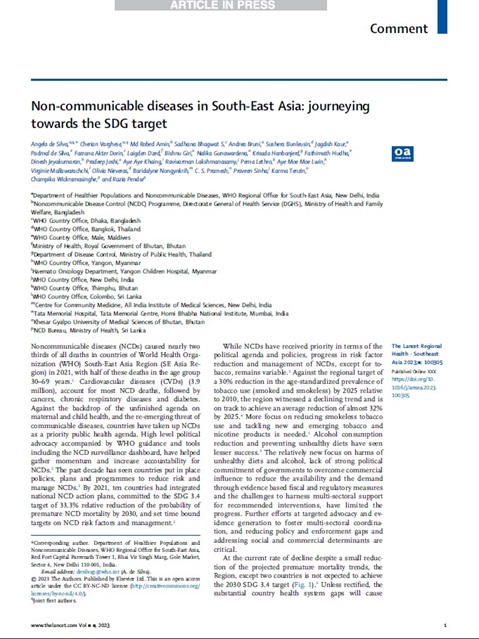Non-communicable diseases in South-East Asia: journeying towards the SDG target
30 October 2023
| Publication

Overview
Noncommunicable diseases (NCDs) caused nearly two
thirds of all deaths in countries of World Health Organization
(WHO) South-East Asia Region (SE Asia Region)
in 2021, with half of these deaths in the age group
30–69 years.1 Cardiovascular diseases (CVDs) (3.9
million), account for most NCD deaths, followed by
cancers, chronic respiratory diseases and diabetes.
Against the backdrop of the unfinished agenda on
maternal and child health, and the re-emerging threat of
communicable diseases, countries have taken up NCDs
as a priority public health agenda. High level political
advocacy accompanied by WHO guidance and tools
including the NCD surveillance dashboard, have helped
gather momentum and increase accountability for
NCDs.2 The past decade has seen countries put in place
policies, plans and programmes to reduce risk and
manage NCDs.3 By 2021, ten countries had integrated
national NCD action plans, committed to the SDG 3.4
target of 33.3% relative reduction of the probability of
premature NCD mortality by 2030, and set time bound
targets on NCD risk factors and management.2
WHO Team
WHO Headquarters (HQ)
